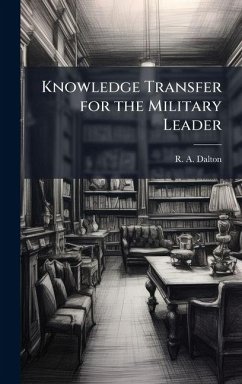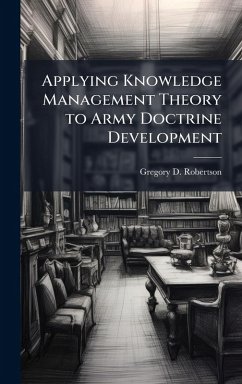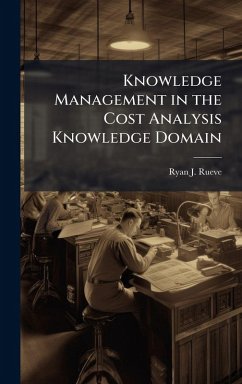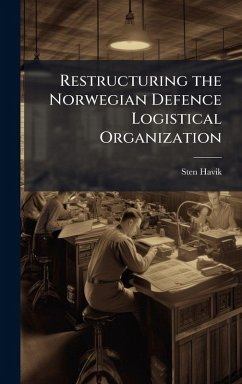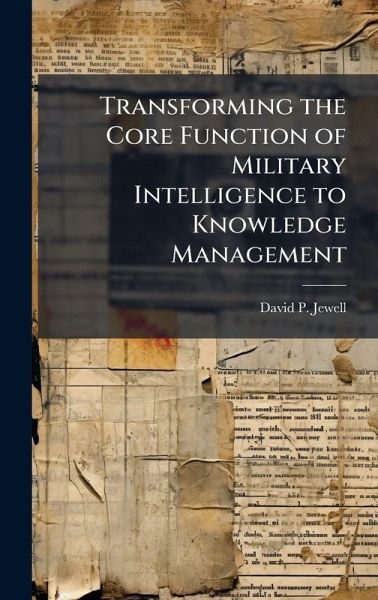
Transforming the Core Function of Military Intelligence to Knowledge Management
Versandkostenfrei!
Versandfertig in über 4 Wochen
28,99 €
inkl. MwSt.
Weitere Ausgaben:

PAYBACK Punkte
14 °P sammeln!
Military Intelligence should transform its core function to knowledge management to best support the Army's Objective Force. The near monopoly for providing valuable collection to Army commanders that MI historically possessed will dissolve as sensors capable of collecting accurate and timely information from enemy signal, visible, thermal, acoustic, seismic, and radar signatures become ubiquitous across the Objective Force. The potential threat of inundation with massive quantities of disparate bits of data this increased sensor capability will present the Army will require MI to commit the m...
Military Intelligence should transform its core function to knowledge management to best support the Army's Objective Force. The near monopoly for providing valuable collection to Army commanders that MI historically possessed will dissolve as sensors capable of collecting accurate and timely information from enemy signal, visible, thermal, acoustic, seismic, and radar signatures become ubiquitous across the Objective Force. The potential threat of inundation with massive quantities of disparate bits of data this increased sensor capability will present the Army will require MI to commit the majority of its efforts and resources to making sense of this information. MI must develop a collaborative culture to empower the fusion of increasingly massive amounts of data into intelligence that is relevant to Army operations and the creation of knowledge Army commanders need to make decisions. This study proposes this transformation should follow the three critical vectors of doctrinal reform, organizational reform, and officer education reform to enable MI to sufficiently inform commanders'; understanding of the threat and environment. These reforms will focus the efforts of MI on Knowledge Management as its core function, while relegating its historic collection function to a subordinate and supporting role. This work has been selected by scholars as being culturally important, and is part of the knowledge base of civilization as we know it. This work was reproduced from the original artifact, and remains as true to the original work as possible. Therefore, you will see the original copyright references, library stamps (as most of these works have been housed in our most important libraries around the world), and other notations in the work. This work is in the public domain in the United States of America, and possibly other nations. Within the United States, you may freely copy and distribute this work, as no entity (individual or corporate) has a copyright on the body of the work. As a reproduction of a historical artifact, this work may contain missing or blurred pages, poor pictures, errant marks, etc. Scholars believe, and we concur, that this work is important enough to be preserved, reproduced, and made generally available to the public. We appreciate your support of the preservation process, and thank you for being an important part of keeping this knowledge alive and relevant.



